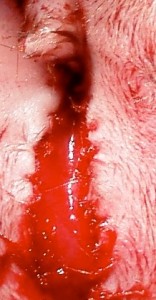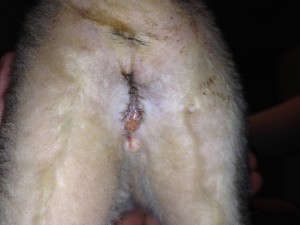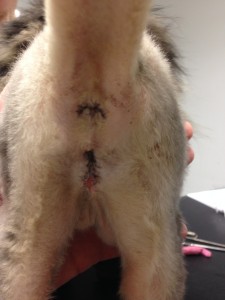At West Midlands Veterinary Referrals we see male cats that get obstructed urinary tracts with mineral deposits that usually form in their bladders. These then get flushed out with urine, only to get stuck towards the level of the penis at the point where the urethra narrows. The urethra is the tube connecting the bladder to the outside.
These cases have typically been initially managed with catheterisation of their bladder and hospitalisation at their own vets. Special diets and encouraging water intake reduce the likelihood of further mineral calculi formation. Cystitis is usually treated medically. Reducing stress for the cat is also important.
These cats often have a history of recurrent episodes of obstruction after intervening periods of apparently coping. They are usually sent to us for a surgical procedure to essentially change the male-type long/narrow urethra for a female-type shorter/wider one. Some people view this procedure rather simplistically as a sex change procedure. The penis is removed as part of the procedure and the cat is castrated if they have not already been done.
Deciding when to abandon recurrent medical treatment and go for a surgical solution varies with a number of patient factors including compliance and owner factors including finance. Recurrent medical treatment can prove expensive in the long run and recurrent and persistent obstruction can have long-term consequences including kidney damage. Equally surgery, which is usually very effective, is neither risk-free nor reversible.
So exactly when to opt for surgery will vary from case to case but many cats undergoing surgery will have had three or more episodes of obstruction. The aftercare sheet for this procedure can be found in the section of fact sheets within the section for owners on this website.
7th October 2012

This stoma is about 3 weeks post op. It has healed nicely and the patient is urinating well. Some of the sutures are still in place. These will slough in the next week or two, taking the little associated scabs with them




